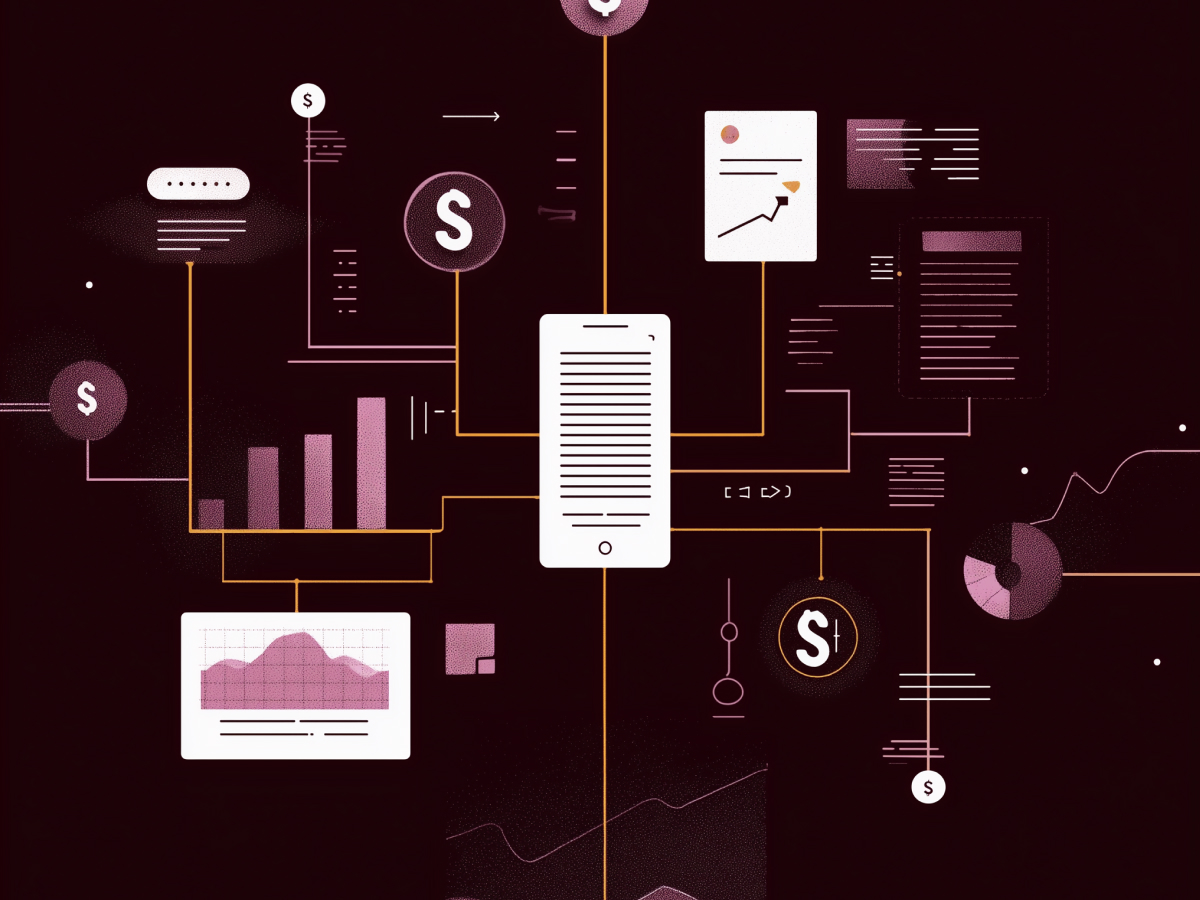Professional services firms face network performance and security challenges
This isn’t about disruption for its own sake, this is about necessity. Professional services, especially in finance, law, consulting, and HR, have committed to running digital-first. That shift brings efficiency, but also complexity. The network no longer lives in a single data center. Applications are distributed across clouds. Employees, clients, and workloads move freely across locations, and so do vulnerabilities, unless contained.
IT teams are being asked to secure more endpoints, integrate more cloud services, and deliver consistent performance across multiple geographies, all with limited internal resources. That’s a tough ask, and it’s only going to scale further as digital service demand rises.
66% of senior IT leaders surveyed by Aryaka said securing SaaS and public cloud applications is one of their biggest struggles. Another 54% point directly to not having enough staff. This isn’t just about a skills gap, it’s about teams being overwhelmed by the volume and variety of security and performance demands placed on them. And with more AI systems requiring high-throughput, low-latency infrastructure, the pressure is only increasing.
There’s no elegance in complexity for complexity’s sake. It slows teams, introduces blind spots, and leads to preventable breaches. The solution is to strategically unify security, performance, and agility into the same playbook. Today’s IT needs to operate more like a precision-engineered system, stable under stress, scalable under demand, and secure by design.
Enhancing SaaS performance, expanding observability, and simplifying operations are key
Let’s simplify this: cloud-first operations demand visibility, speed, and simplicity. That’s what senior IT leaders are trying to achieve. You can’t optimize what you don’t see, and you can’t fix what’s fragmented. That’s why improving SaaS performance (72%), gaining network and security observability (68%), and simplifying operations (48%) are at the top of their priority list, according to Aryaka’s 2024 survey.
SaaS controls the digital front door. Customers and internal teams rely on clean, fast delivery of these services. If performance slips, productivity doesn’t just drop, it stalls. When things break or slow down, and nobody can see why, you’re blind at the exact moment you need insight.
Most enterprises are still dealing with a mess of legacy systems, outdated security models, and scattered data flows. When you push all of that into hybrid cloud and expect consistency, it creates friction. That friction kills experience, customer and employee alike.
Executives should understand, this is a design problem. If the ecosystem isn’t built to support modern workloads, then operational inefficiency becomes the baseline norm. That’s not scalable. Eliminating the noise requires simplifying architecture, closing visibility gaps, and ensuring that every app, endpoint, and process connects into a unified system where security and performance can be monitored in real time. Efficient systems scale. Clunky ones buckle. Your choice.
Daily IT complexity and staffing gaps are impediments to achieving strategic objectives
Strategic goals only matter if you can execute against them. In the current environment, most professional services firms are under constant pressure to perform while dealing with broken or overloaded systems. According to Aryaka’s survey, 58% of IT leaders struggle with latency and remote user access. That’s not a small issue, it affects every digital experience delivered to clients and employees.
Throw in the fact that 54% of respondents say their internal IT teams are too small, and 46% are managing too many vendor and support contracts, and it becomes obvious, execution is being compromised by complexity. Tools aren’t integrated. Staff are firefighting instead of optimizing. And support is scattered across third parties that don’t share the same visibility or priorities.
This isn’t a software problem. It’s an operational architecture problem. Too many moving parts pushing in different directions. So while leadership might define big strategic goals, faster service delivery, strong security posture, better digital experiences, they’re being delayed or diluted the moment they hit day-to-day operations.
Leaders need to ask the right questions here: How much time is my team spending maintaining versus advancing? Where are the efficiency losses? What dependencies are making us fragile? Once you answer that, clearing a path to execution becomes simpler, and faster.
Fragmented deployment of edge-layer security tools leaves firms exposed to vulnerabilities
Let’s be direct, if your edge security stack is incomplete or inconsistent, you’re exposed. Many professional services firms have partially rolled out critical solutions like zero trust network access, next-gen firewalls, or secure web gateways. But it’s not enough if those tools aren’t configured properly, aren’t interoperable, or don’t cover every endpoint.
Aryaka’s survey makes this clear: 62% of firms reported data leakage from SaaS platforms. That means sensitive information is slipping through. Add to that the fact that 49% are dealing with shadow IT, unauthorized apps and services that bypass security, and you start to see the risk profile rise fast.
This isn’t just about patching what’s broken. It’s about aligning your security posture with the actual structure of your IT environment. Today that environment is borderless: remote users, SaaS platforms, external partners, decentralized networks. The edge is everywhere now. If you only secure parts of it, the rest becomes the attack surface.
There’s no margin for incomplete deployment. Decision-makers need to move toward unified, edge-to-cloud security with full observability. Fragmentation leads to blind spots. Blind spots lead to breaches. The deployment has to be intentional, integrated, and maintained continuously. That’s how you reduce risk and regain control.
The introduction of Generative AI brings new vulnerabilities
Generative AI is showing up on almost every transformation roadmap now, and it’s moving fast. Firms in professional services are ahead of many in other sectors, like manufacturing or logistics, when it comes to evaluating or deploying GenAI. But the infrastructure, security posture, and team readiness often aren’t keeping pace with the deployment curve.
The issue is not the AI itself. The issue is what it requires, speed, scale, massive data throughput, and secure access to sensitive environments. Systems that were already strained by legacy tools, limited staff, and SaaS sprawl are now being asked to support workloads that change constantly, learn from giant data sets, and operate in less predictable ways. That’s a problem if your network can’t adapt in real time or your data protection isn’t airtight.
Generative AI introduces new attack surfaces. Its dependency on APIs, cloud collaboration environments, and large language model processing makes firms more exposed. Without system-wide observability and advanced threat detection built into the deployment, you’re opening risk vectors your current stack wasn’t designed to manage.
Executives should start facing this directly. Investing in GenAI without allocating equal investment to security, bandwidth, and AI-aware observability tools creates imbalance. It can slow adoption or cause unintended damage. The move forward needs to be coordinated, technology, teams, and infrastructure all aligned. Anything less creates exposure.
Secure Access Service Edge (SASE) is a promising solution
This is where a lot of forward-looking firms are focusing: combining networking and security into a single cloud-native architecture. That’s what SASE delivers. Instead of layering tools on top of legacy frameworks, SASE removes duplication, standardizes enforcement policies, and provides performance optimization at the same time.
When Aryaka asked professional services firms about future plans, 44% said they were planning to adopt SASE over the next 12 months. That’s a signal. These teams are moving toward solutions that simplify control and deployment while keeping performance high and latency low across hybrid environments.
SASE works because it fits the new reality: users are distributed, data is everywhere, apps run in multi-cloud. Trying to manage this with siloed vendors and security policies built for on-premises systems isn’t sustainable. You can’t scale what you can’t secure, and you can’t protect what you can’t see.
What SASE does well is unify the structure. It gives IT teams consistent enforcement points no matter where users or apps connect. It also enables better visibility across traffic patterns and threat signals, which is mission-critical in a decentralized architecture.
Management at the executive level should view SASE not as a next step, but as a core foundation. It’s the infrastructure baseline that everything else, AI, remote work, SaaS acceleration, will run on. Moving to it early means less operational friction later.
Budget constraints, IT resource limitations, and fear of disrupting legacy systems
The intent to modernize is there. The problem is execution. Across professional services, too many firms are still working within the limits of outdated infrastructure and constrained budgets. When Aryaka asked senior IT leaders about what’s holding them back, 39% pointed to budget, 32% cited limited internal IT resources, and 21% admitted concern about disrupting existing legacy systems.
These numbers tell you what’s really happening: change is being delayed because the cost, financial, operational, and structural, feels too high. Leadership knows the environment is changing. They see the risks. But when budgets are tight and teams are stretched, the default move is to maintain instead of modernize. Not because it’s the right choice. Because it feels safer in the short term.
But deferring modernization increases long-term risk, especially as services become more data-driven and network-dependent. Legacy systems weren’t built for fluid network traffic, edge computing, or distributed SaaS environments. They eventually slow everything down, security, performance, and innovation.
For executives, this creates a decision point. Either invest incrementally with clear ROI milestones or risk falling behind structurally. The path forward doesn’t have to be disruptive. But it does have to be deliberate. Define priorities, allocate budget where the returns are most immediate, performance, security, visibility, and remove obstacles that prevent teams from updating infrastructure that no longer meets operational demands.
Aryaka recommends a four-pillar strategy to guide digital transformation in professional services
There’s no shortage of transformation talk in the enterprise space. What sets action apart from noise is clarity, and Aryaka’s proposed four-pillar strategy delivers that. It’s focused on solving real problems, not introducing new complexity.
Start with observability. If you can’t see what’s happening across your cloud, SaaS, and AI environments, everything else lags. From threat detection to performance tuning, visibility is step one. Then move to securing the edge. That means enforcing zero trust across all entry points. No assumptions, no gaps.
Next, convergence through architecture. SASE delivers this, networking and security combined into a single, efficient system. It replaces a patchwork of legacy tools that don’t talk to each other. Finally, build flexibility into delivery models. That means supporting remote work, hybrid deployments, and diverse connectivity needs across global environments.
Each of these pillars is practical, measurable, and improves stability. Executives should treat them as a system for modernization, not a checklist. The companies that integrate these principles now are doing more than securing networks. They’re unlocking speed, agility, and long-term structural advantage.
Ken Rutsky, Chief Marketing Officer at Aryaka, summed it up clearly: “Professional services firms are under immense pressure to deliver seamless digital experiences while protecting an extremely sophisticated and decentralised environment.” The solution isn’t more tools. It’s a smarter architecture built around clear priorities, performance, visibility, security, and scale.
The bottom line
At this point, the takeaway is obvious, professional services firms are running faster into digital, but dragging network and security baggage that won’t scale. Decentralized apps, remote teams, and GenAI aren’t future trends, they’re current realities. And the infrastructure supporting them needs to match that pace.
If performance is inconsistent, visibility is limited, or security is stitched together from disconnected tools, then you’re not building for resilience. You’re building for reactivity. That’s expensive, slow, and unsustainable.
The moment to shift is now. Lead with unified architecture. Prioritize edge-to-cloud observability. Drop the legacy friction. Zero trust and SASE aren’t buzzwords, they’re operational levers. When deployed correctly, they don’t just solve IT problems. They increase speed, reduce risk, and free your teams to focus on value, not maintenance.
This isn’t about keeping up. It’s about setting the pace.





